Abstract
A nosocomial epidemic of multiply resistant (MR) Klebsiella pneumoniae characterized by resistance to gentamicin, tobramycin, kanamycin, cephalothin, chloramphenicol, and ampicillin occurred in a Veterans Administration hospital from 1975 to 1977. A total of 66 infected or colonized patients were observed in a 2-year period; there were 43 urinary tract infections, 13 wound or soft tissue infections, 8 pneumonias, and 6 patients with only asymptomatic stool colonization. Four patients had both pneumonia and a urinary tract infection. There were five secondary bacteremias. The majority of MR K. pneumoniae strains were type 30, but types 17, 21, and 23 and nontypable organisms were also recovered. Other gram-negative bacilli with the same antibiotic resistance pattern were isolated from 14 patients. Seven MR K. pneumoniae and three resistant Escherichia coli isolates were shown to transfer resistance to E. coli K-12. MR K. pneumoniae-infected patients were seriously ill, had long hospitalization times (mean, 67 days), and were in close geographic proximity to other cases. Compared with controls, cases more frequently had prior antibiotic treatment and urinary catheters, but not respiratory instrumentation, nasogastric tubes, or antacid treatment. The apparent source of the outbreak was traced to an index case who entered the hospital with an MR K. pneumoniae urinary tract infection. Asymptomatic gastrointestinal carriage without infection elsewhere was infrequent (1.6% of cultured patients), but 78% of patients with MR K. pneumoniae infections at other sites also had the organism in their stools. Hospital antibiotic usage was unchanged before and during the outbreak. The identification of an index case and relative lack of asymptomatic stool carriers are unique features of this plasmid-mediated MR K. pneumoniae epidemic. Although this MR K. pneumoniae outbreak appeared to be controlled by the use of isolation techniques, a simultaneous increase in gentamicin resistance among other gram-negative organisms was observed.
Full text
PDF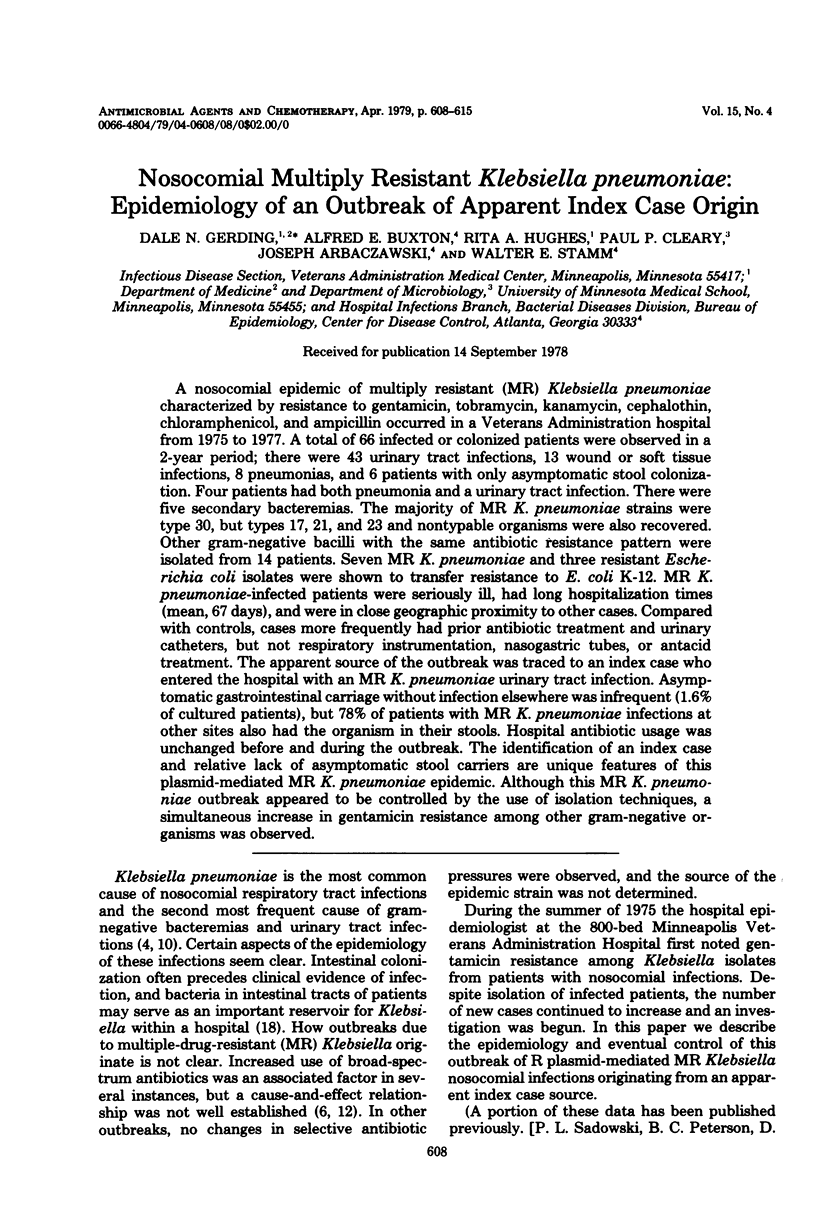
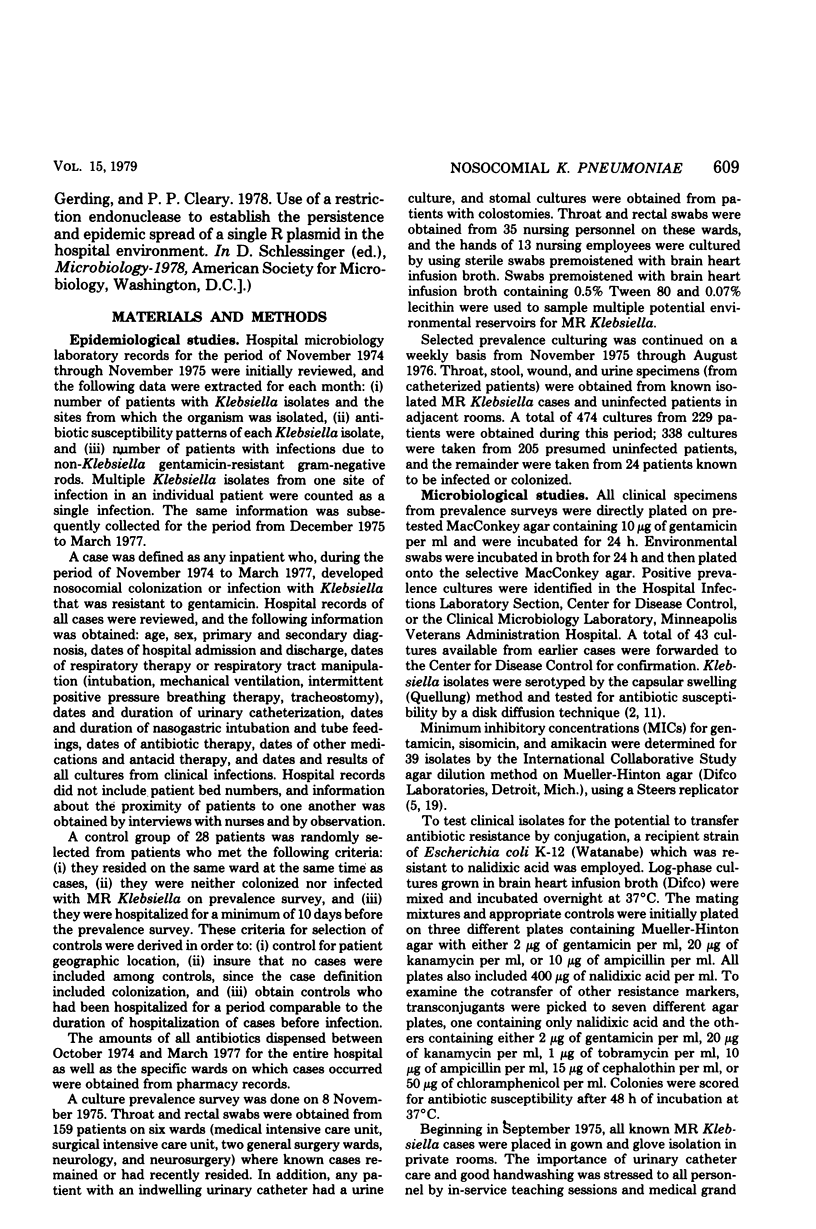
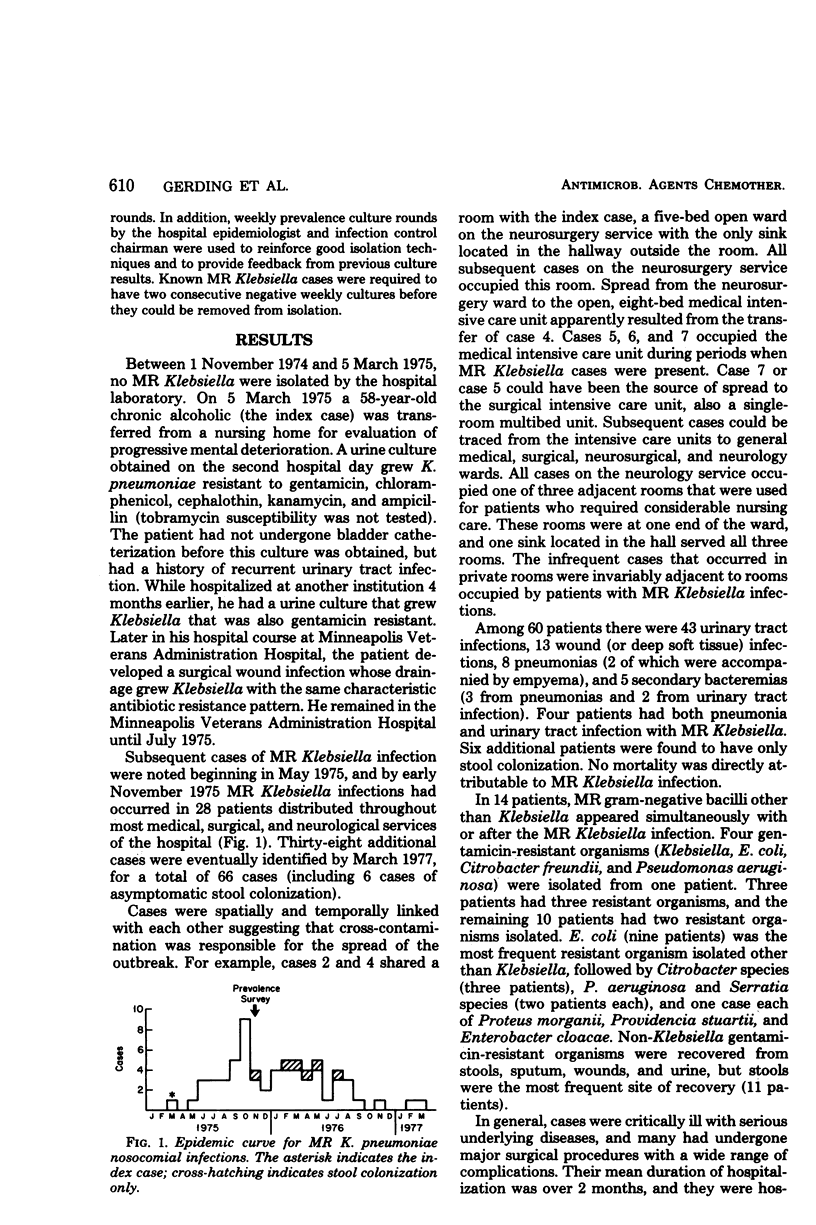
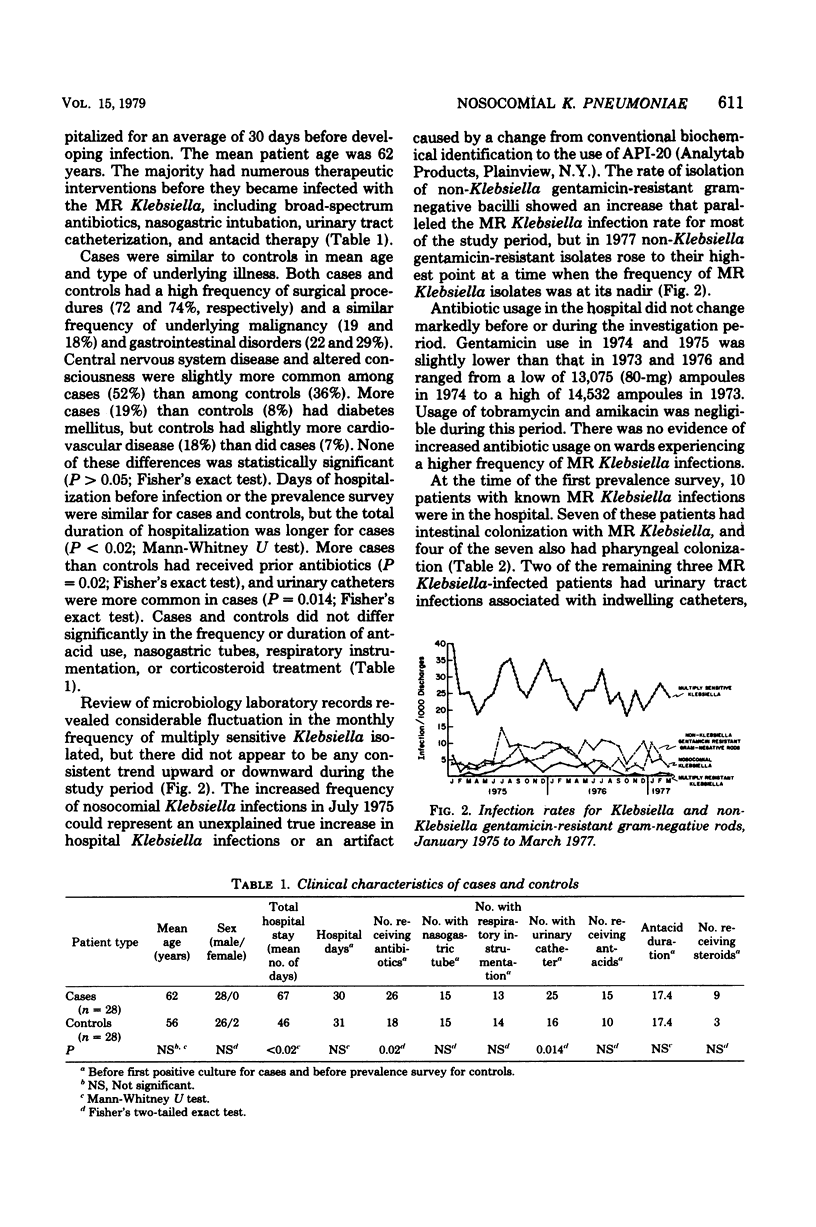
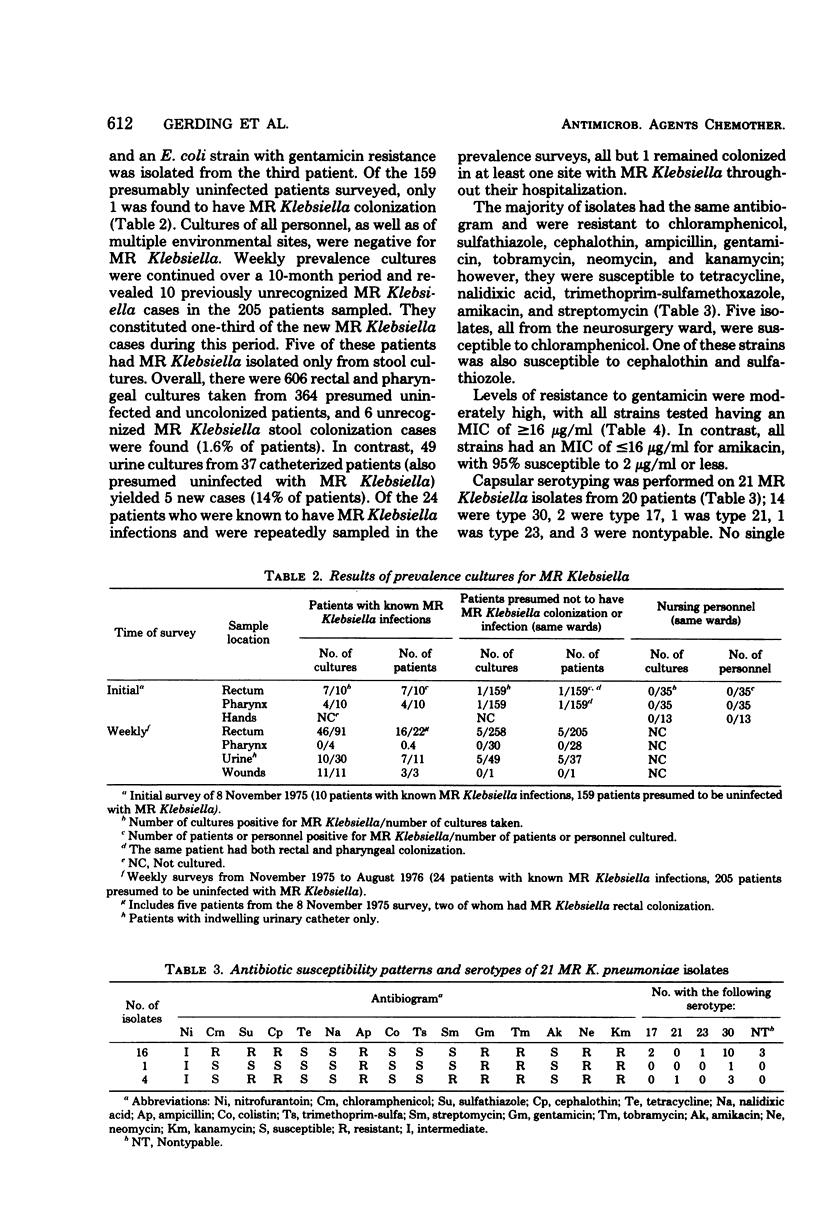
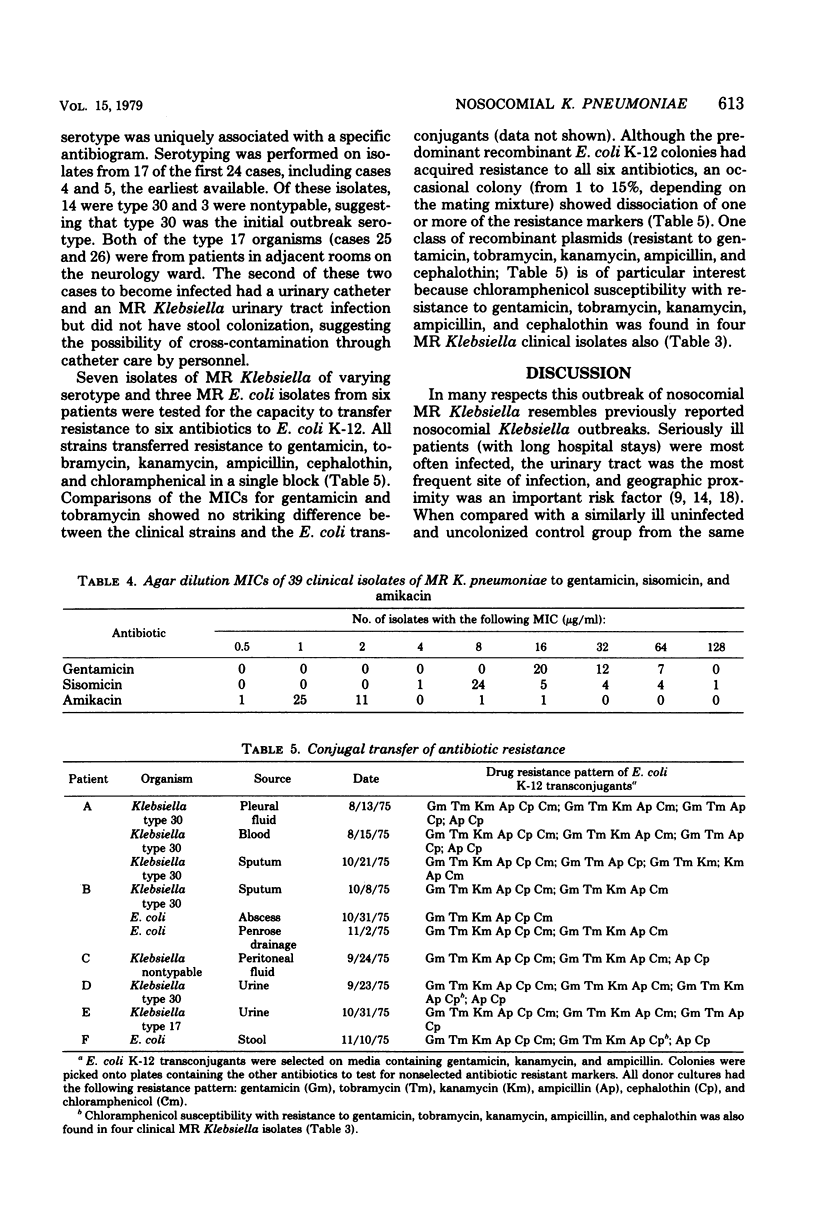
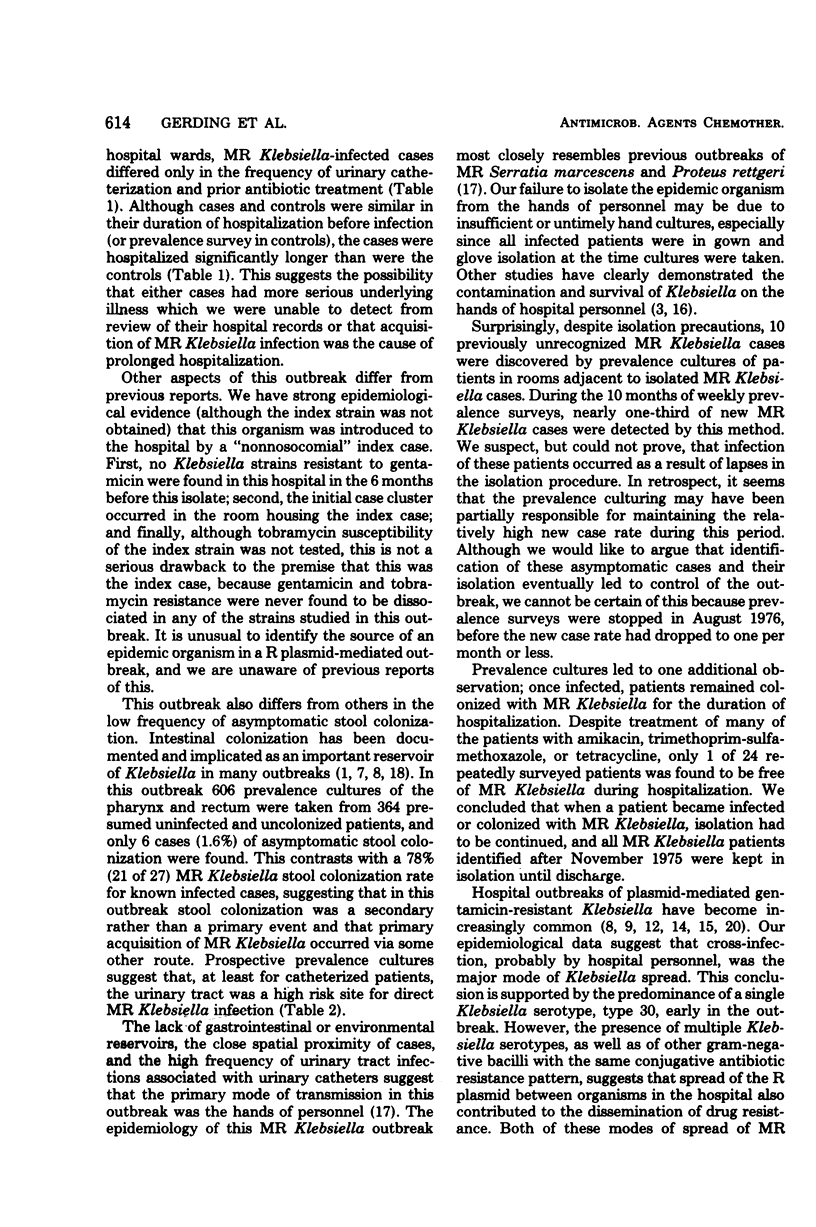
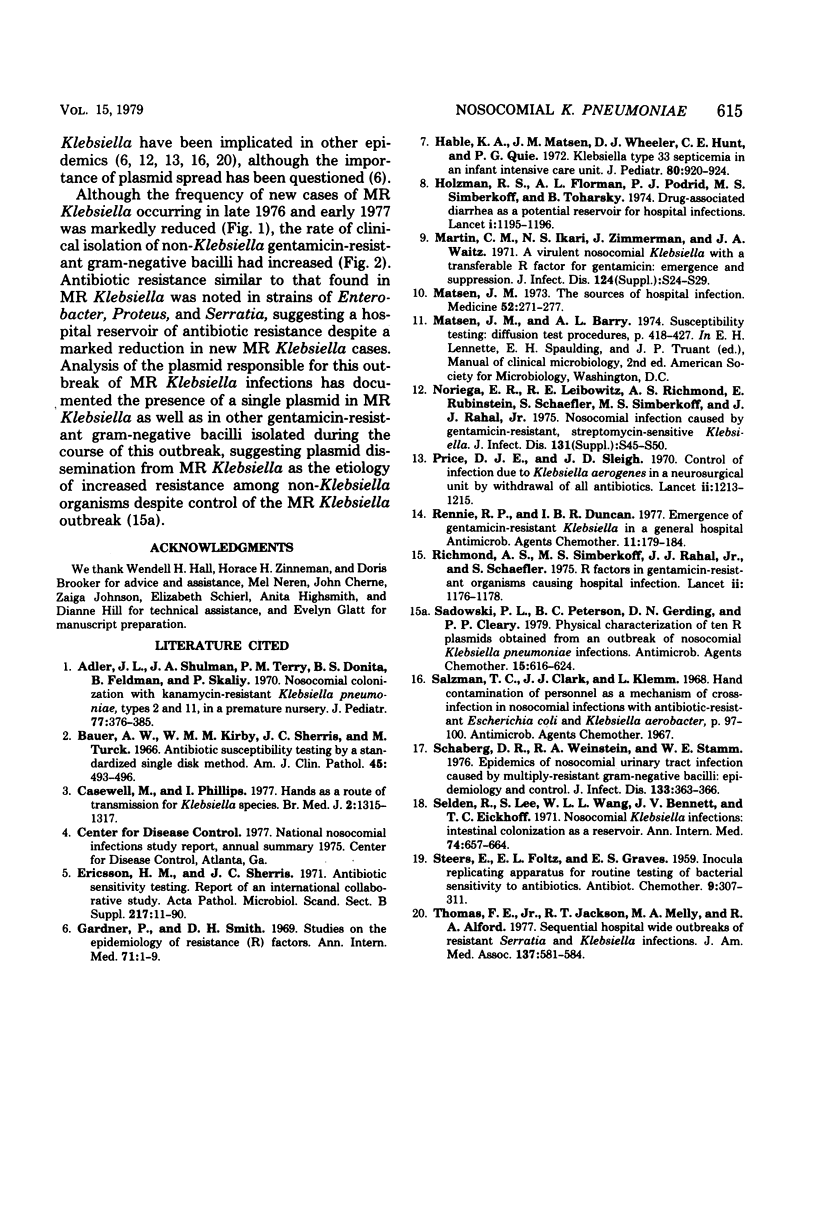
Selected References
These references are in PubMed. This may not be the complete list of references from this article.
- Adler J. L., Shulman J. A., Terry P. M., Feldman D. B., Skaliy P. Nosocomial colonization with kanamycin-resistant Klebsiella pneumoniae, types 2 and 11, in a premature nursery. J Pediatr. 1970 Sep;77(3):376–385. doi: 10.1016/s0022-3476(70)80004-x. [DOI] [PubMed] [Google Scholar]
- Bauer A. W., Kirby W. M., Sherris J. C., Turck M. Antibiotic susceptibility testing by a standardized single disk method. Am J Clin Pathol. 1966 Apr;45(4):493–496. [PubMed] [Google Scholar]
- Casewell M., Phillips I. Hands as route of transmission for Klebsiella species. Br Med J. 1977 Nov 19;2(6098):1315–1317. doi: 10.1136/bmj.2.6098.1315. [DOI] [PMC free article] [PubMed] [Google Scholar]
- Gardner P., Smith D. H. Studies on the epidemiology of resistance (R) factors. I. Analysis of Klebsiella isolates in a general hospital. II. A prospective study of R factor transfer in the host. Ann Intern Med. 1969 Jul;71(1):1–9. doi: 10.7326/0003-4819-71-1-1. [DOI] [PubMed] [Google Scholar]
- Hable K. A., Matsen J. M., Wheeler D. J., Hunt C. E., Quie P. G. Klebsiella type 33 septicemia in an infant intensive care unit. J Pediatr. 1972 Jun;80(6):920–924. doi: 10.1016/s0022-3476(72)80002-7. [DOI] [PubMed] [Google Scholar]
- Holzman R. S., Florman A. L., Podrid P. J., Simberkoff M. S., Toharsky B. Drug-associated diarrhoea as a potential reservoir for hospital infections. Lancet. 1974 Jun 15;1(7868):1195–1196. doi: 10.1016/s0140-6736(74)91004-6. [DOI] [PubMed] [Google Scholar]
- Martin C. M., Ikari N. S., Zimmerman J., Waitz J. A. A virulent nosocomial Klebsiella with a transferable R factor for gentamicin: emergence and suppression. J Infect Dis. 1971 Dec;124 (Suppl):S24–S29. doi: 10.1093/infdis/124.supplement_1.s24. [DOI] [PubMed] [Google Scholar]
- Matsen J. M. The sources of hospital infection. Medicine (Baltimore) 1973 Jul;52(4):271–277. doi: 10.1097/00005792-197307000-00005. [DOI] [PubMed] [Google Scholar]
- Noriega E. R., Leibowitz R. E., Richmond A. S., Rubinstein E., Schaefler S., Simberkoff M. S., Rahal J. J., Jr Nosocomial infection caused by gentamicin-resistant, streptomycin-sensitive Klebsiella. J Infect Dis. 1975 May;131 (Suppl):S45–S50. doi: 10.1093/infdis/131.supplement.s45. [DOI] [PubMed] [Google Scholar]
- Price D. J., Sleigh J. D. Control of infection due to Klebsiella aerogenes in a neurosurgical unit by withdrawal of all antibiotics. Lancet. 1970 Dec 12;2(7685):1213–1215. doi: 10.1016/s0140-6736(70)92179-3. [DOI] [PubMed] [Google Scholar]
- Rennie R. P., Duncan I. B. Emergence of gentamicin-resistant Klebsiella in a general hospital. Antimicrob Agents Chemother. 1977 Feb;11(2):179–184. doi: 10.1128/aac.11.2.179. [DOI] [PMC free article] [PubMed] [Google Scholar]
- Richmond A. S., Simberkoff M. S., Rahal J. J., Jr, Schaefler S. R factors in gentamicin-resistant organisms causing hospital infection. Lancet. 1975 Dec 13;2(7946):1176–1178. doi: 10.1016/s0140-6736(75)92660-4. [DOI] [PubMed] [Google Scholar]
- Sadowski P. L., Peterson B. C., Gerding D. N., Cleary P. P. Physical characterization of ten R plasmids obtained from an outbreak of nosocomial Klebsiella pneumoniae infections. Antimicrob Agents Chemother. 1979 Apr;15(4):616–624. doi: 10.1128/aac.15.4.616. [DOI] [PMC free article] [PubMed] [Google Scholar]
- Schaberg D. R., Weinstein R. A., Stamm W. E. Epidemics of nosocomial urinary tract infection caused by multiply resistant gram-negative bacilli: epidemiology and control. J Infect Dis. 1976 Mar;133(3):363–366. doi: 10.1093/infdis/133.3.363. [DOI] [PubMed] [Google Scholar]
- Selden R., Lee S., Wang W. L., Bennett J. V., Eickhoff T. C. Nosocomial klebsiella infections: intestinal colonization as a reservoir. Ann Intern Med. 1971 May;74(5):657–664. doi: 10.7326/0003-4819-74-5-657. [DOI] [PubMed] [Google Scholar]
- Thomas F. E., Jackson R. T., Melly A., Alford R. H. Sequential hospitalwide outbreaks of resistant Serratia and Klebsiella infections. Arch Intern Med. 1977 May;137(5):581–584. [PubMed] [Google Scholar]


